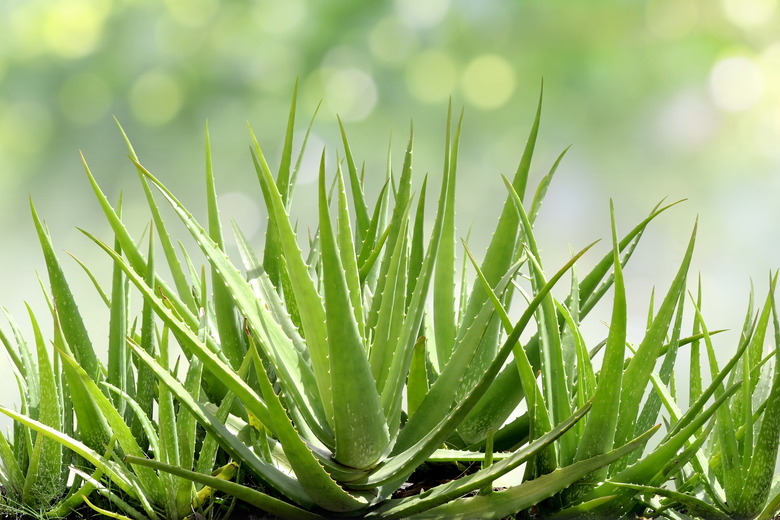How To Kill Bugs On Aloe Plants
We may receive a commission on purchases made from links.
Cute as a button and totally undemanding, aloe vera is a true pleasure as a houseplant. For starters, they are one of the few plants with a botanical name (Aloe vera) that is the same as the common name. They require no special care to keep their stemless, succulent leaves looking in top form, yet they offer a cooling gel that is an effective treatment for burns. While bugs don't often bother this plant, wiping down its leaves takes care of most pests.
Meet the Aloe Vera
Meet the Aloe Vera
Aloe vera leaves are plump and a cheerful green, fanning out from the center of the plant like many green fingers pointing upward. Their fleshy quality is the secret of their success; as succulents, they store water in them for times of drought. The edges of each leaf are lined with tiny teeth.
The plant hails from the tropics and can only be grown outdoors in the warmest of locales, U. S. Department of Agriculture plant hardiness zones 10 and 11. However, it is a popular houseplant across the country. When grown outdoors, aloe vera can get quite large, with leaves growing to 18 inches or longer. Mature aloe vera plants produce remarkable clusters of flowers in red or orange, appearing at the top of tall spikes. It's rare for a plant grown indoors to get this big or to flower.
Care for the Aloe Vera
Care for the Aloe Vera
Aloes are very easy-care houseplants and tolerate neglect admirably. One important part of aloe vera care is finding the right place to site your plant. It grows best with bright, indirect light. It can survive in low light but becomes leggy. Even more important is the soil/water combination. Wet soil kills more aloe veras than anything else.
Aloe vera soil must drain well and quickly to prevent this succulent from getting root rot. Water the plant only when the top third of the soil is very dry. At that point, water it generously.
Although aloe is generally a healthy plant if not overwatered, indoor plants can catch indoor-plant pests, like aphids and mealybugs. The solution isn't difficult. Take the plant to the kitchen sink and use the sprayer feature on the faucet to rinse off the leaves. Then, use a paper towel or soft cloth to wipe down each leaf carefully, getting any and all bugs off the plant. In case of a terrible infestation, you can use an insecticide solution.
Use the Aloe Vera
Use the Aloe Vera
If you've heard that aloe vera is good for you, it's the truth, but that doesn't mean you should consume it in any way, shape, or form. The leaves are said to contain something called Anthraquinone glycoside. This can cause nausea.
Instead, break off an aloe stem and use the gel from the inside to sooth a burn. Alternatively, you can buy aloe vera gel in a bottle. Any type of aloe vera gel is particularly effective for sunburns.
